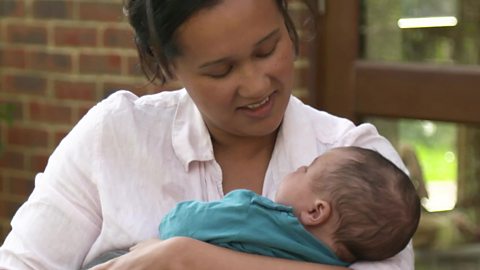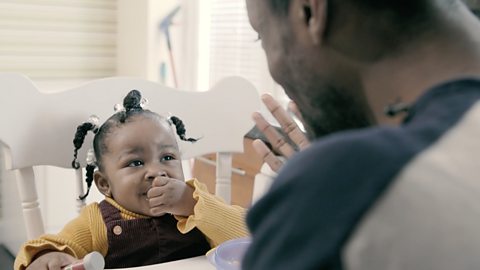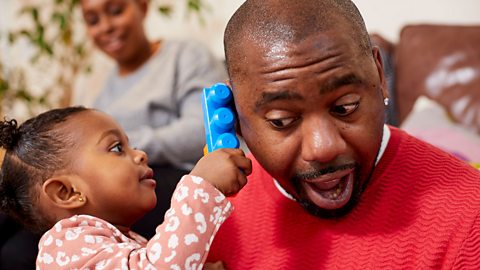Itâs one of the parenting buzz phrases of the moment, but what exactly are wake windows and why are they so important for your baby?
We caught up with sleep consultant Andrea Grace, who says, âWake windows are being talked about a lot at the moment, so itâs useful for parents and carers to know what they are, and why these wake windows can actually help your baby sleep.â
What are wake windows?
Andrea says, âIn a nutshell, a wake window is the period of time between sleeps when your baby or child is awake.â Their wake window starts as soon as your baby wakes up and then ends when they fall asleep for their nap, or at night-time. Wake windows that are too long or too short can mean your baby struggles to sleep (and that means less sleep for you, too!).

The science behind wake windows
Wondering why your baby is awake for such short periods of time, compared to your toddler or preschooler? Itâs all down to the chemicals in our bodies, says Andrea.
âDuring their wake windows, babies and children experience a gradual increase in a chemical called adenosine. This increases their âsleep pressureâ, or âsleep driveâ, which helps them feel tired and then fall asleep.â The younger your baby is, the quicker they build up this sleep pressure. âA new baby really can't stay awake for long and will have really short wake windows, sometimes just a few minutes. But as babies get older and build up stamina, their wake windows extend naturallyâ, she adds. âFrom about three years old, a child can manage a wake window of about 12 hours.â
Wake windows by age
Here are the typical wake windows for newborn babies up to 5 years old. But remember, each child is different so your baby might need slightly shorter or longer wake windows.
| Age | Wake Window |
|---|---|
| 0-2 weeks | Sleeps on and off most of the time |
| 2-8 weeks | 1-1.5 hours |
| 8-12 weeks | 1.5-2 hours |
| 3-6 months | 2-3 hours |
| 7-12 months | 2.5-4 hours |
| 1-2 years | 4-5 hours |
| 2-5 years | 5-12 hours |
When should you change your baby's wake windows?
Be led by your baby, says Andrea. âSleep apps or charts might be saying now is the time your baby should be going down, but actually they are fine. Theyâre chilled out and not grumpy. So putting them to bed too soon without enough of a build-up of sleep pressure can lead to negative bedtime associations. That means they get into their cot or bed and canât sleep, and it can become an unhappy place that way. There are no hard and fast rules to wake windows.
Itâs important for parents to learn the signs that their baby is ready for sleep.â
What are the signs your baby is tired?
There are a few tell-tale signs to watch out for, says Andrea. âThe very first sleepy sign is when a child just stares into the distance, and doesn't engage with you or looks away. Getting a bit grumpy, crying or grizzling and rubbing their eyes, is another. By the time it gets to yawning, they are well on the way to needing sleep!â. At this point, try not to delay putting them down for a nap or night-time sleep.

Understanding baby's sleep patterns
Understanding your babyâs sleep can be helpful for parents. Especially if they (and you!) are not getting much of it. And wake windows are key, says Andrea. âIf the wake window is too long and a baby becomes overtired, that makes it very difficult for them to sleep at all. The reason for that is because when they get overtired, they start to produce higher levels of the âfight or flightâ hormone, cortisol. So even though they might be really tired, they can end up being strung out and find it really hard to switch off because their cortisol levels are high.â
Activities for baby's wake windows
Wondering what to do in your babyâs wake windows? Here are some ideas to make the most of them:
Set âwake signifiersâ
Just as itâs important to let your baby know itâs time for sleep, you should do the same for awake time. âBabies and young children canât tell the time so they rely on these sleep and wake signifiers to figure out where they are in timeâ, says Andrea. âAt the start of their wake window, change your tone of voice so itâs cheery and lively and say, âhello, time to get upâ, Open the curtains and change them out of their sleeping bag if theyâre in one.â
Be ready with cuddles
Some babies wake up crying, either because theyâve fallen asleep upset or have woken up and donât like being alone. âIf your baby is upset at the start of their wake window, be ready with cuddlesâ, says Andrea. âHave a quiet start to their awake time and cuddle them until theyâve calmed down.â

Nappy change games
Your baby will probably need a nappy change during their wake window. Try blowing raspberries on their tummy or sing nursery rhymes while you change them. There are lots of activities to try for younger babies too.
Let them pick
Wake windows are the time to play! Lay out a few toys or activities and let them choose which one they do. 'Whatâs in the bag?' is always a favourite or peekaboo.
Snack chats
Youâll often feed your baby during their wake window, and you can turn this snack or mealtime into a fun activity too. Chat to your baby as they eat, describing what they are having or asking them questions.

Go outside
So, you could head outside during their wake windows. This could be a trip to the park or a walk round the block. Point out things for your child to spot, like cars or trees. This will help them pick up new words and keep them entertained.
Sleepy time
As your child nears the end of their wake window, you can help them get ready for sleep. Pick a quiet activity that relaxes them. If itâs their bedtime sleep, try these mindful sleepytime games for preschoolers.






